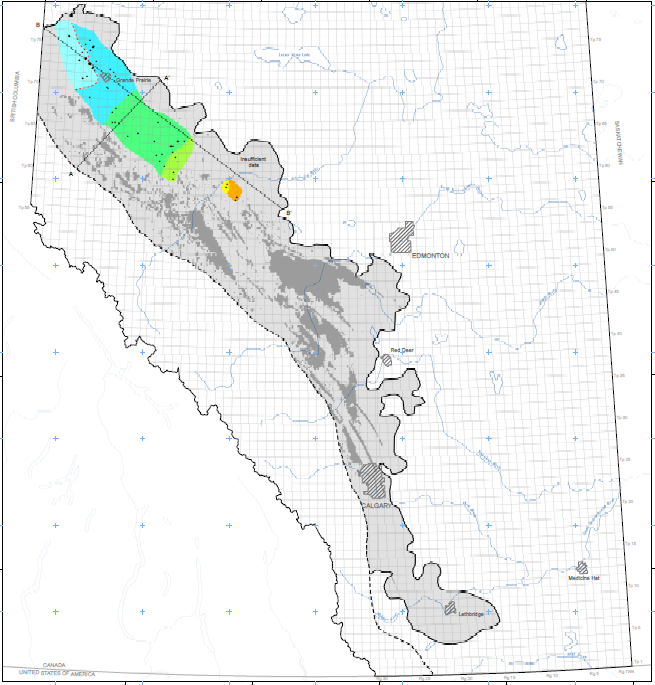This map depicts the distribution of total dissolved solids (TDS) in groundwater in the Cardium hydrostratigraphic unit (HSU). The map is a result of an empirical Bayesian kriging technique using publicly available water chemistry data from oil and gas well drillstem tests and production fluids. In addition, water chemistry analyses from water source wells submitted as part of groundwater license applications were used.
The distribution of TDS was mapped at a regional scale using many years of data, thus providing a good indication of regional water chemistry within the unit rather than site specific values. Hydrogeological mapping was limited to the northern portion of the Cardium HSU, where hydrocarbon production is infrequent and isolated. More extensive production from hydrocarbon pools is found throughout the remainder of the Cardium HSU, precluding the availability of data for hydraulic head mapping. The location of water source wells and oil and gas wells used in mapping the distribution of total dissolved solids (TDS) is displayed on an inset map.
The uncertainty of prediction is depicted on an additional inset map, which shows the residual values (predicted value minus measured value) plotted at each location to indicate where underprediction or overprediction occurs. Two additional inset maps show the distribution of hydraulic head and the results of water driving force analysis, respectively. The geometry and variable thickness of the Cardium HSU are illustrated on schematic cross-sections. The regional lithostratigraphy and hydrostratigraphy of the Cardium HSU and overlying and underlying units are highlighted in a table.
Brinsk y, J. (2021): Distribution of total dissolved solids in the Cardium hydrostratigraphic unit; Alberta Energy Regulator / Alberta Geological Survey, AER /AGS Map 544, scale 1:1 750 000.

